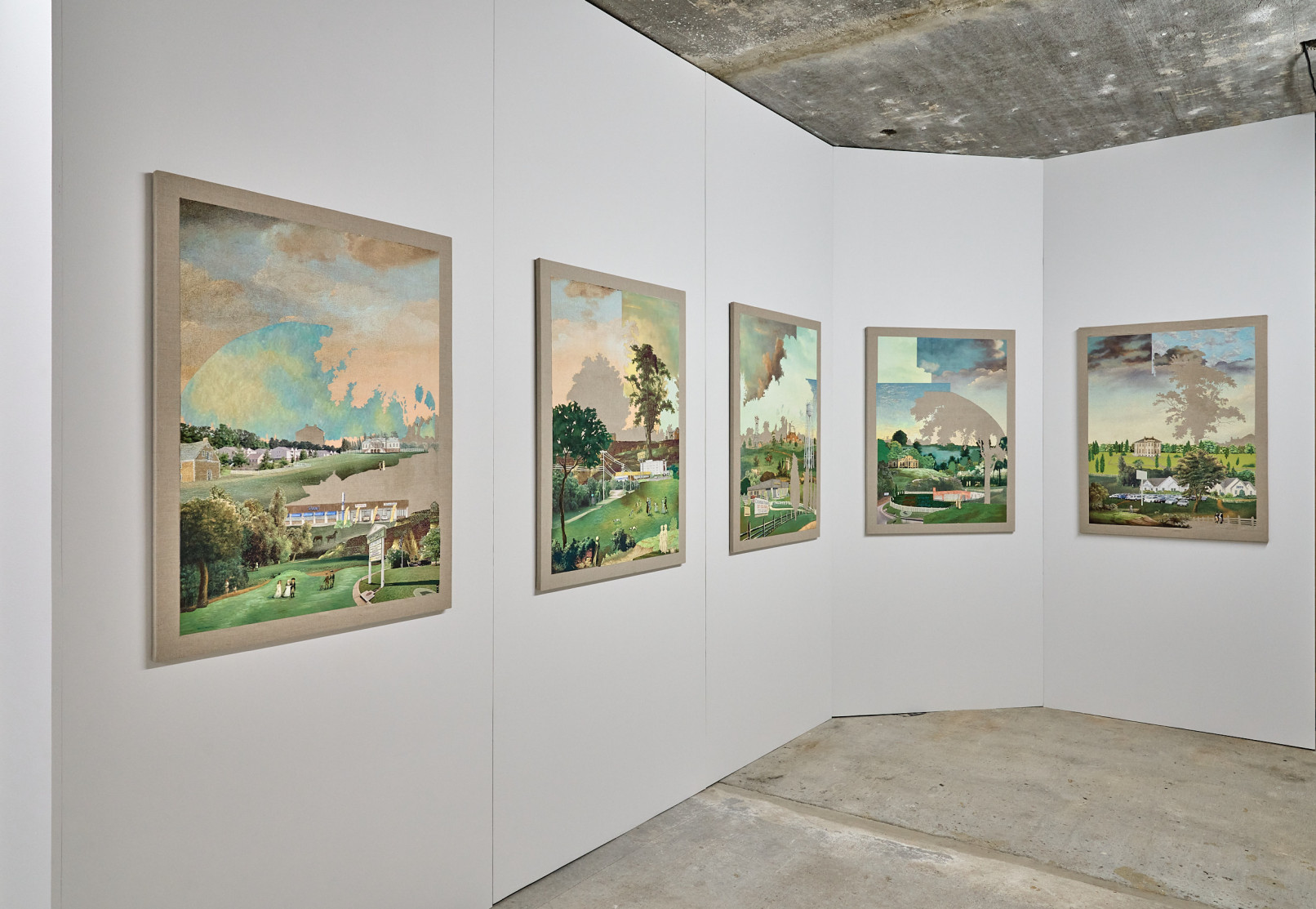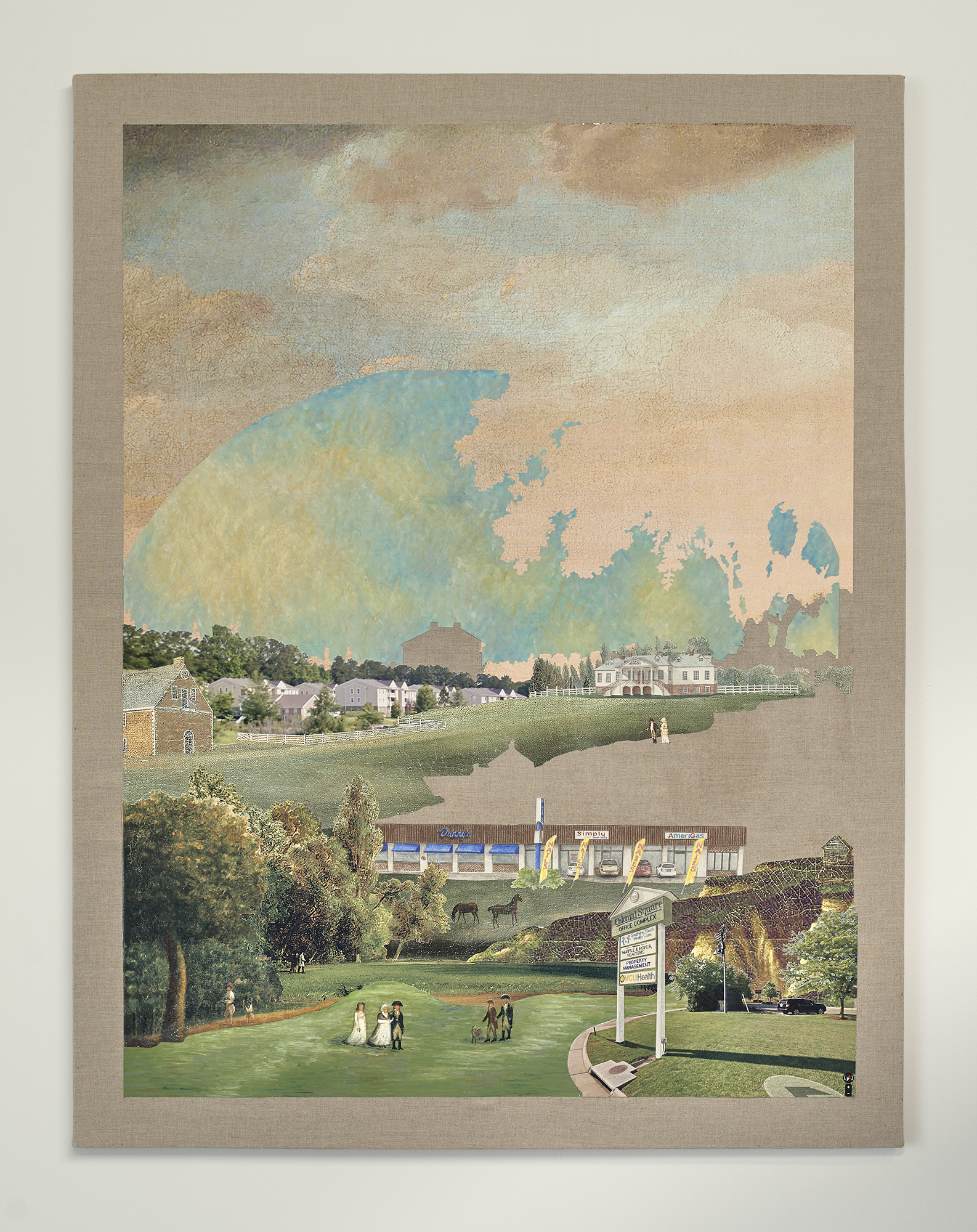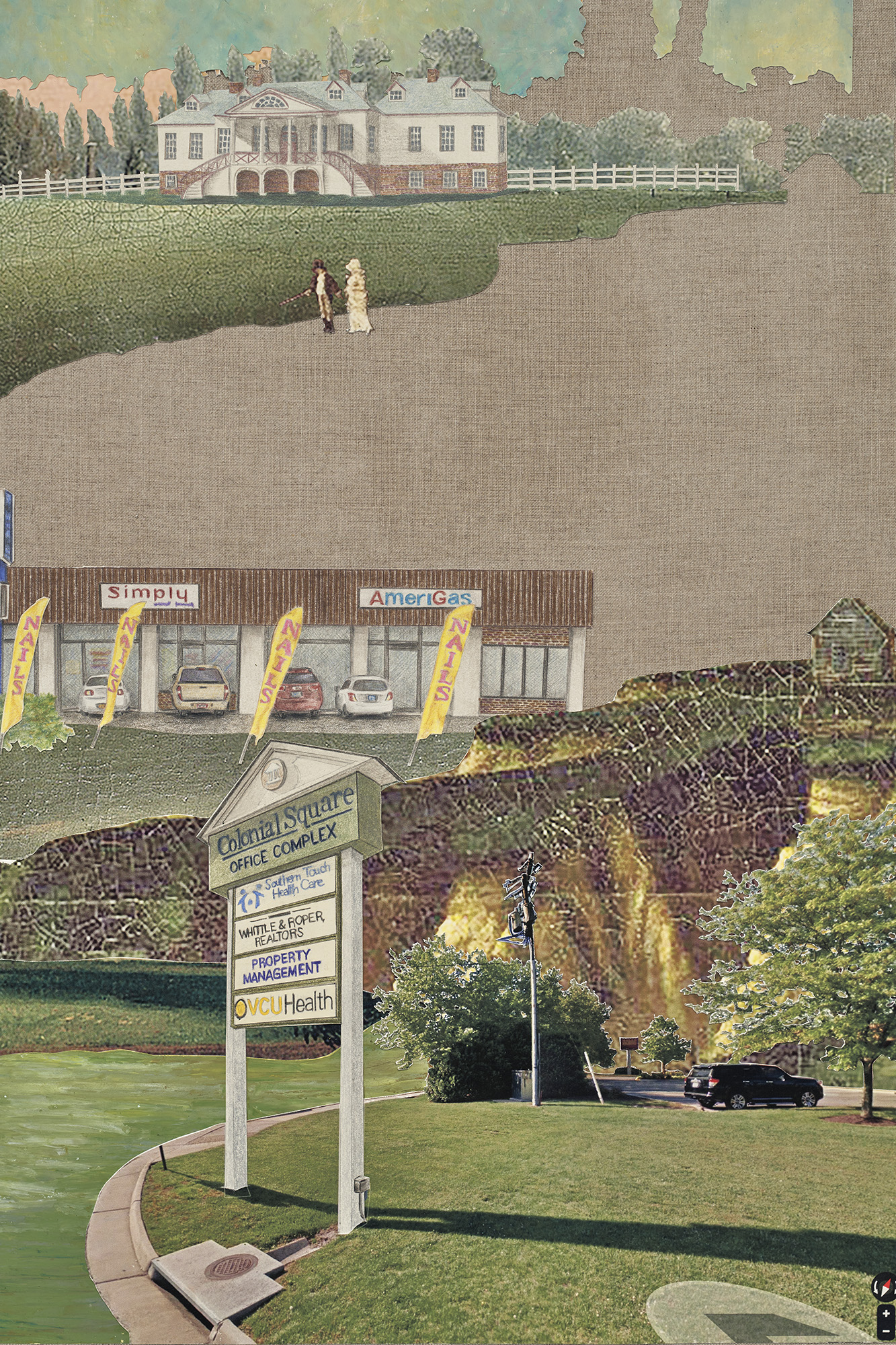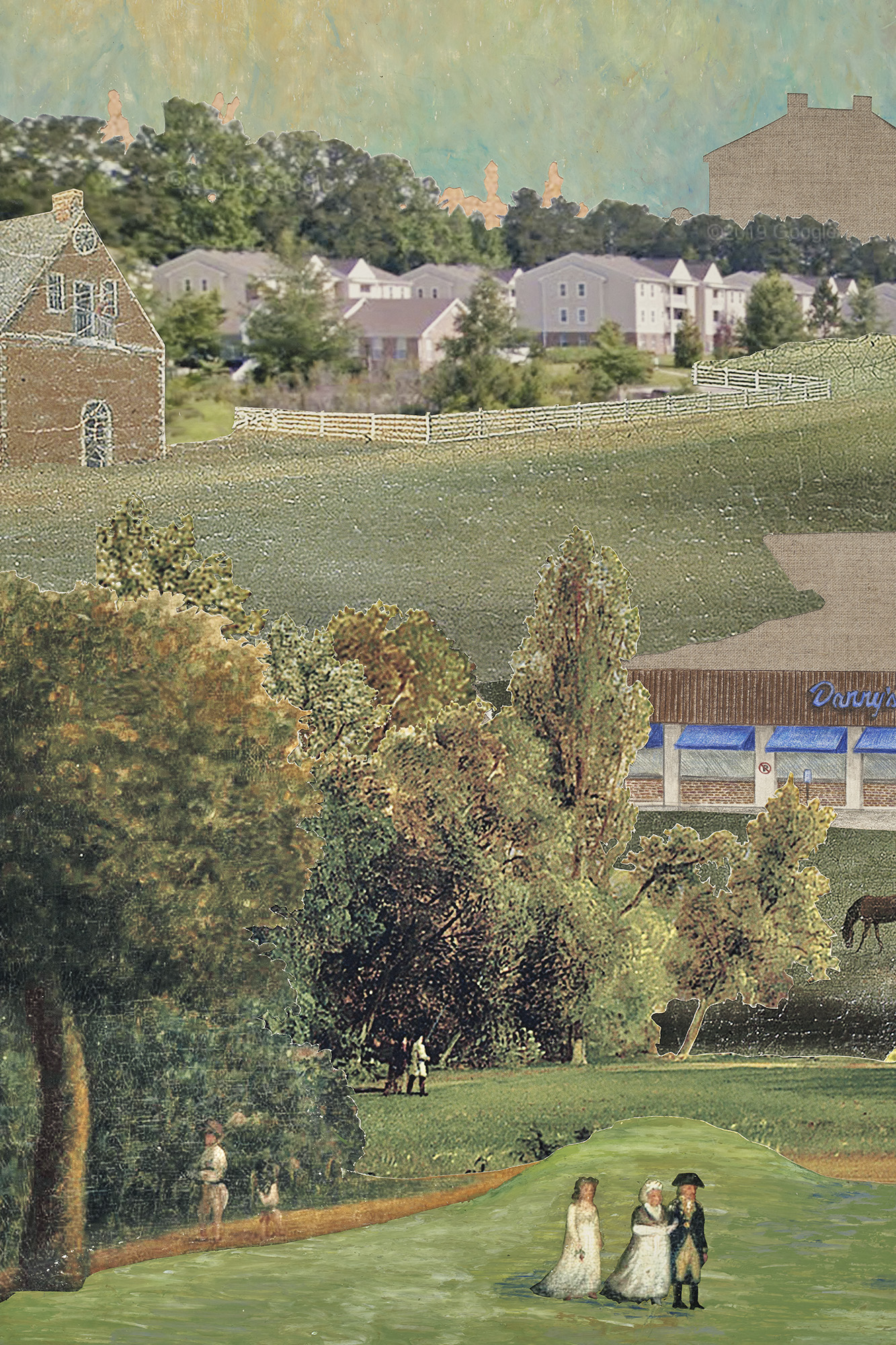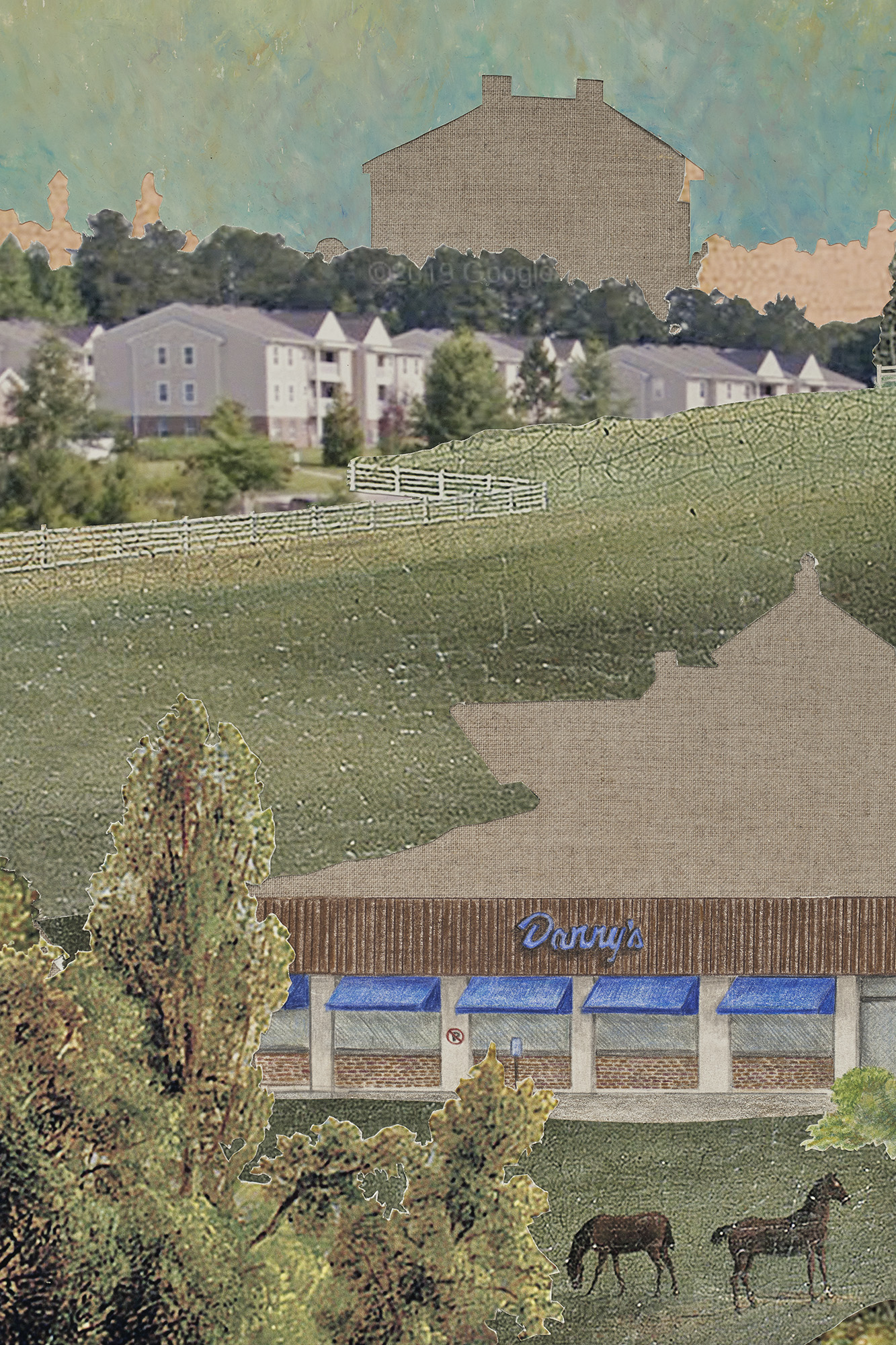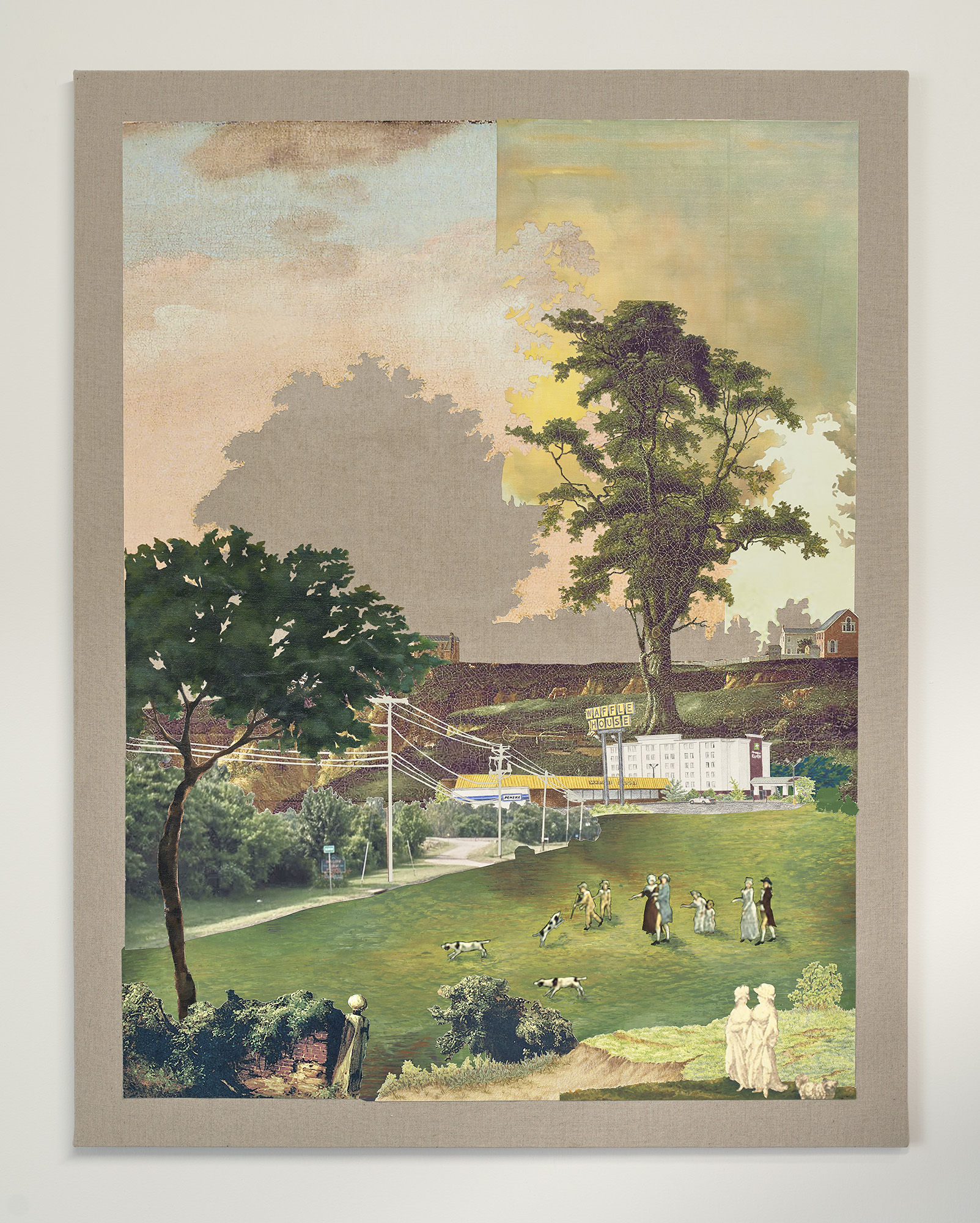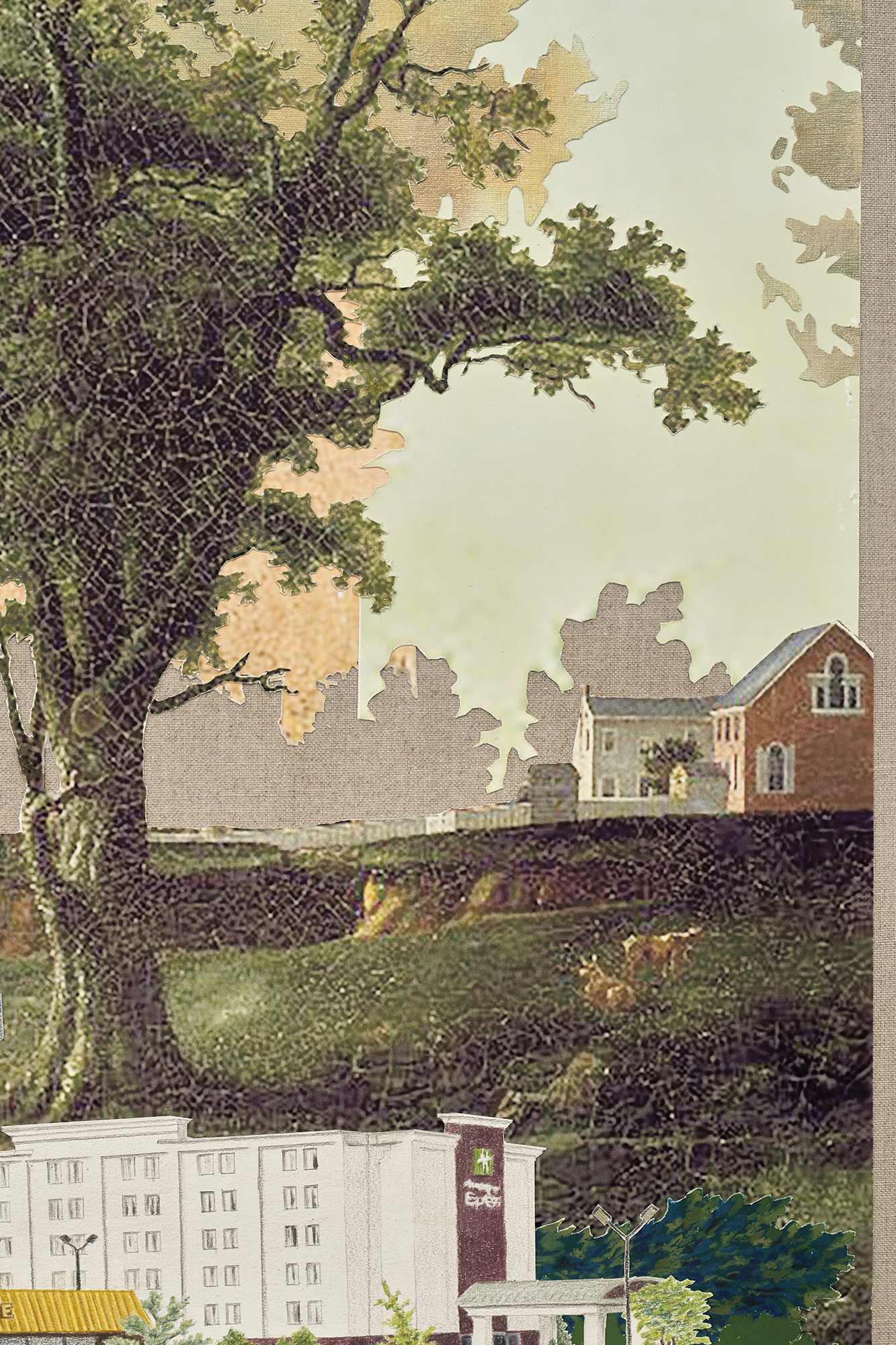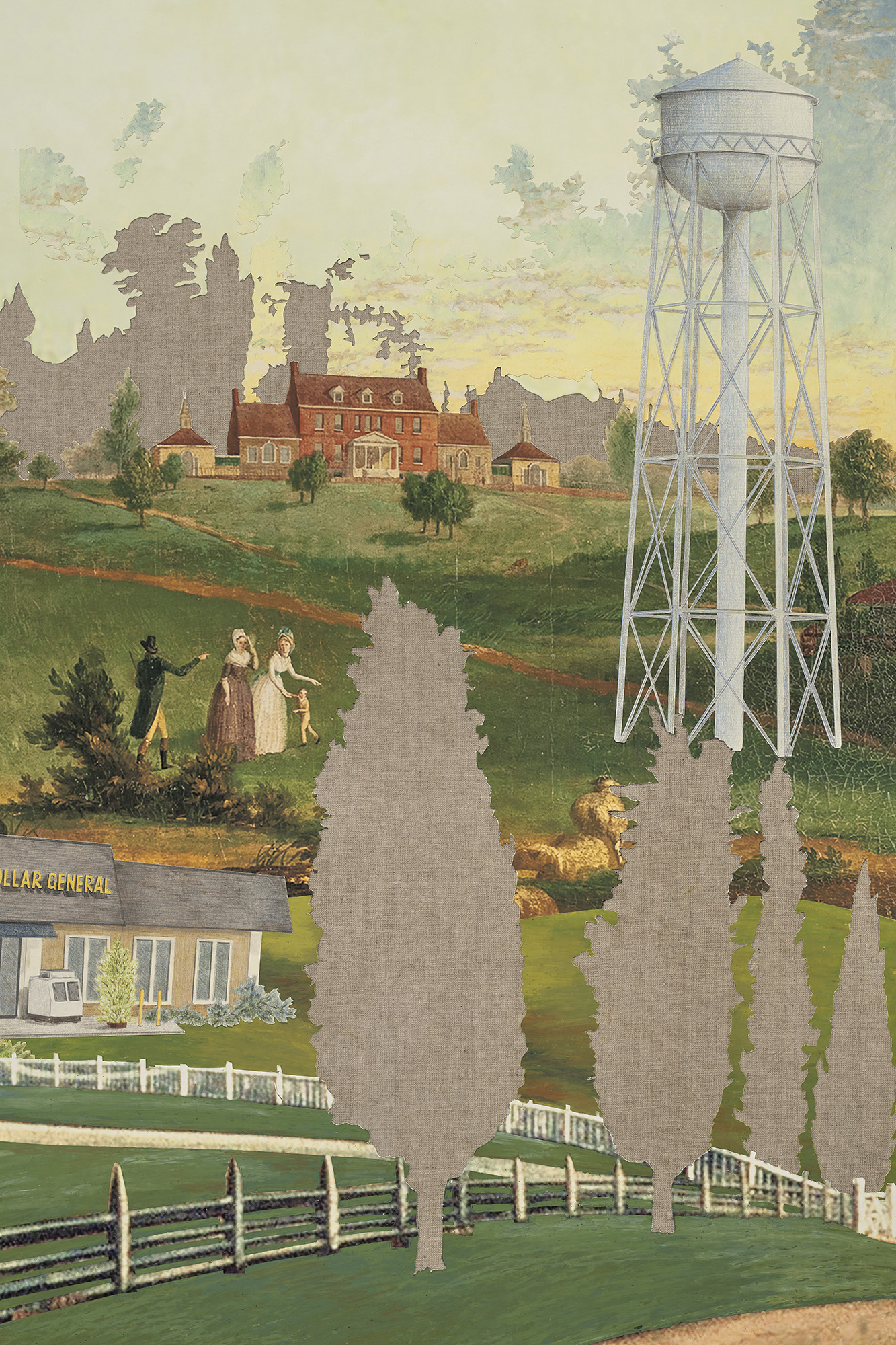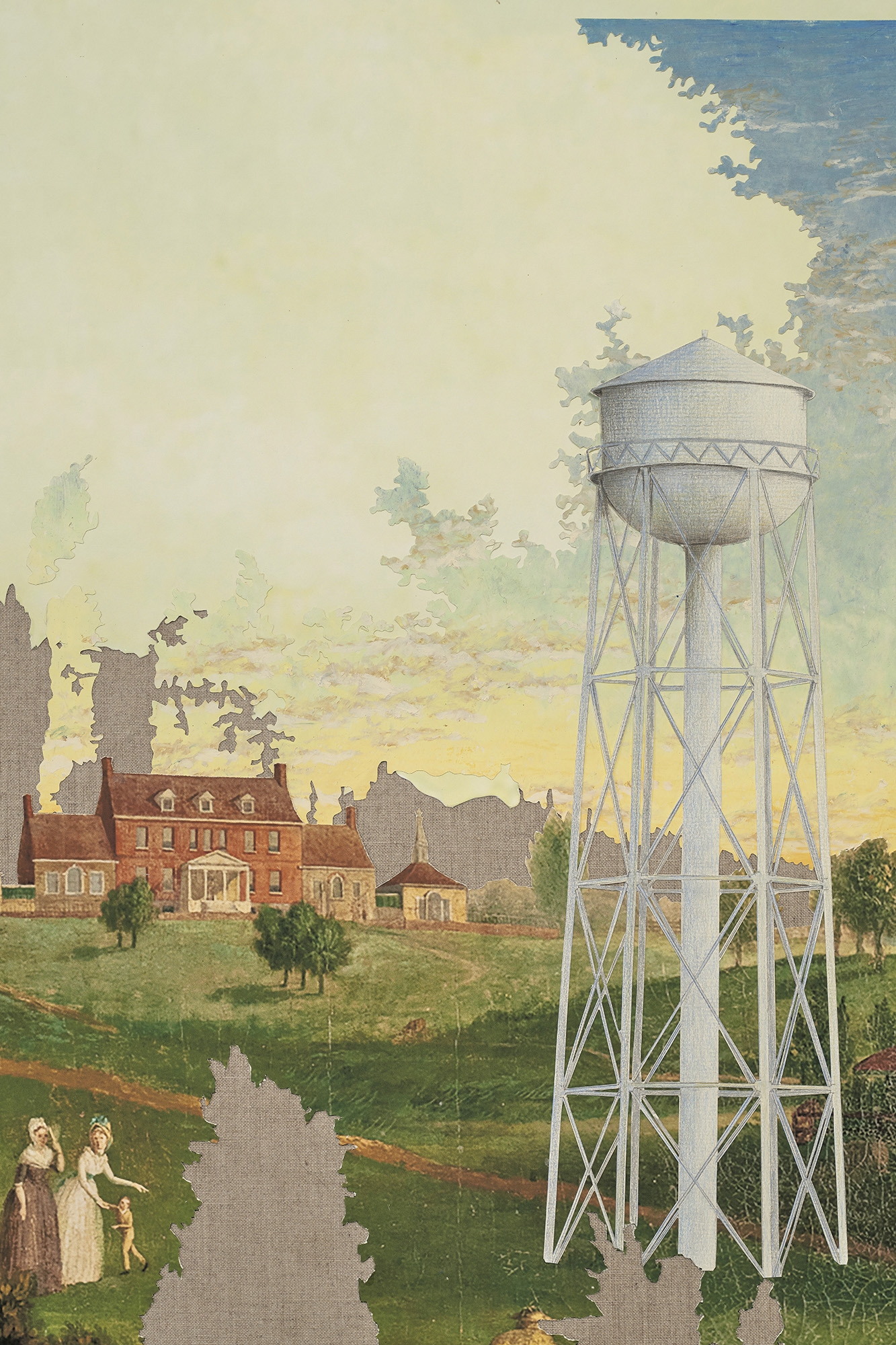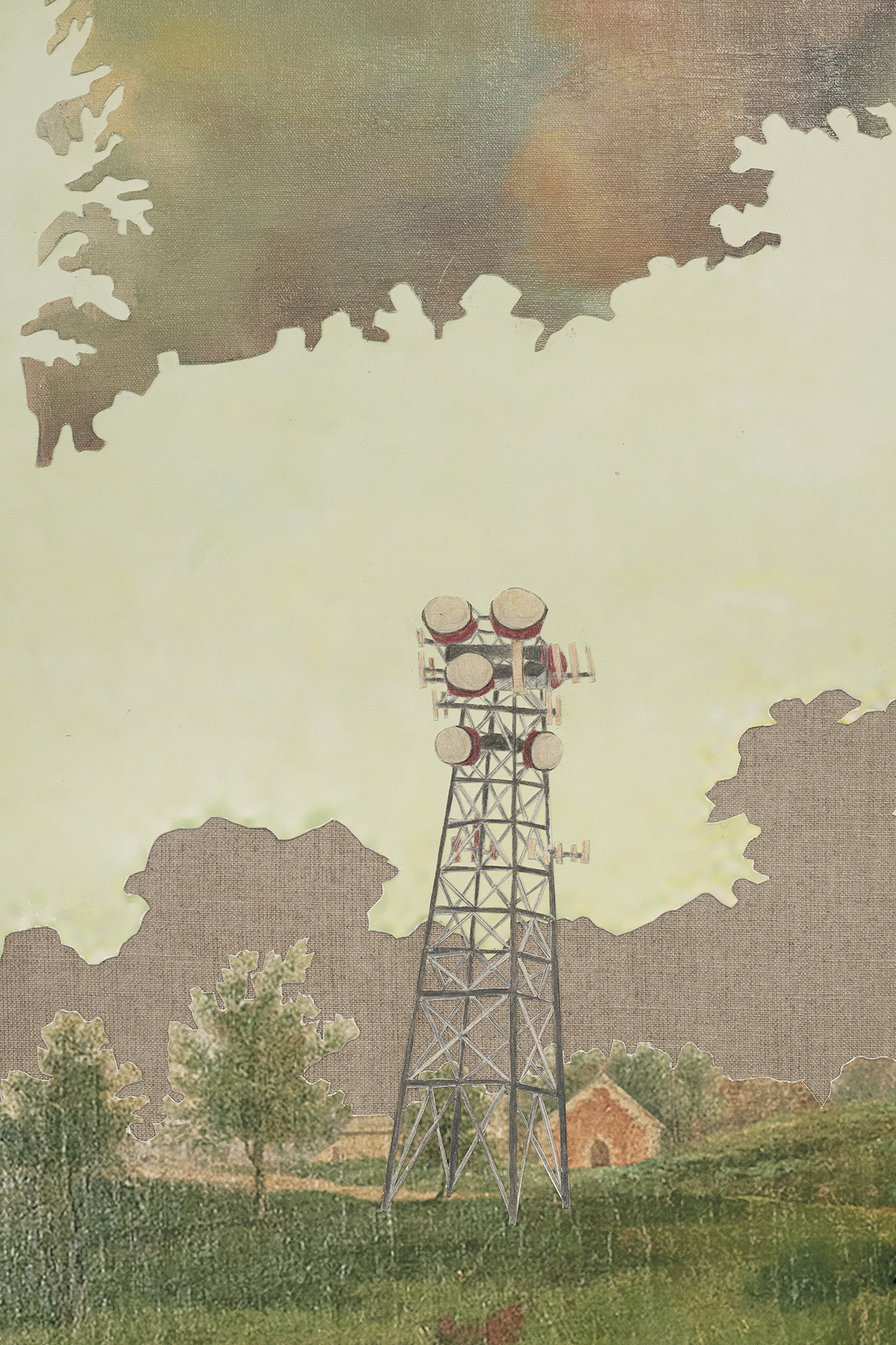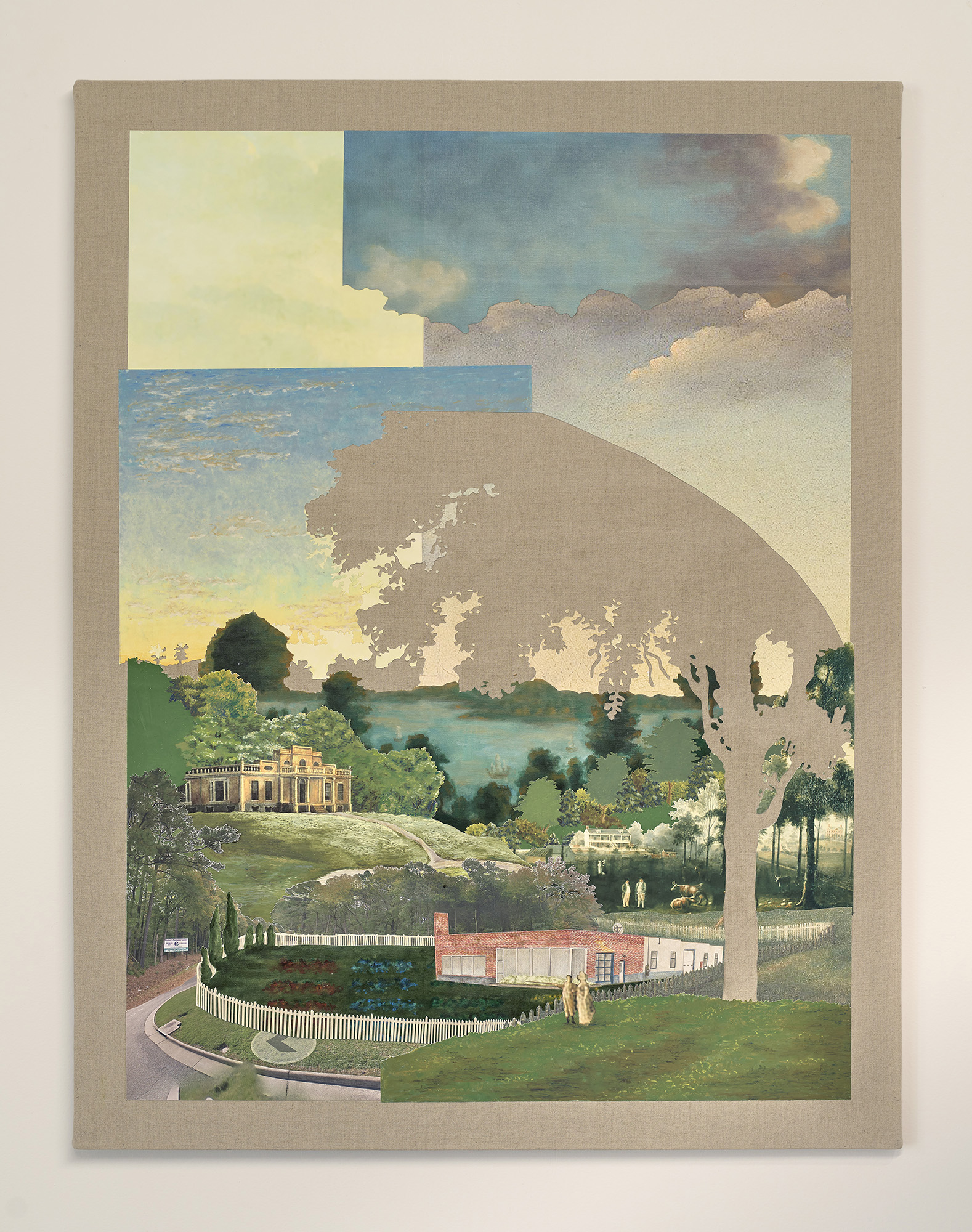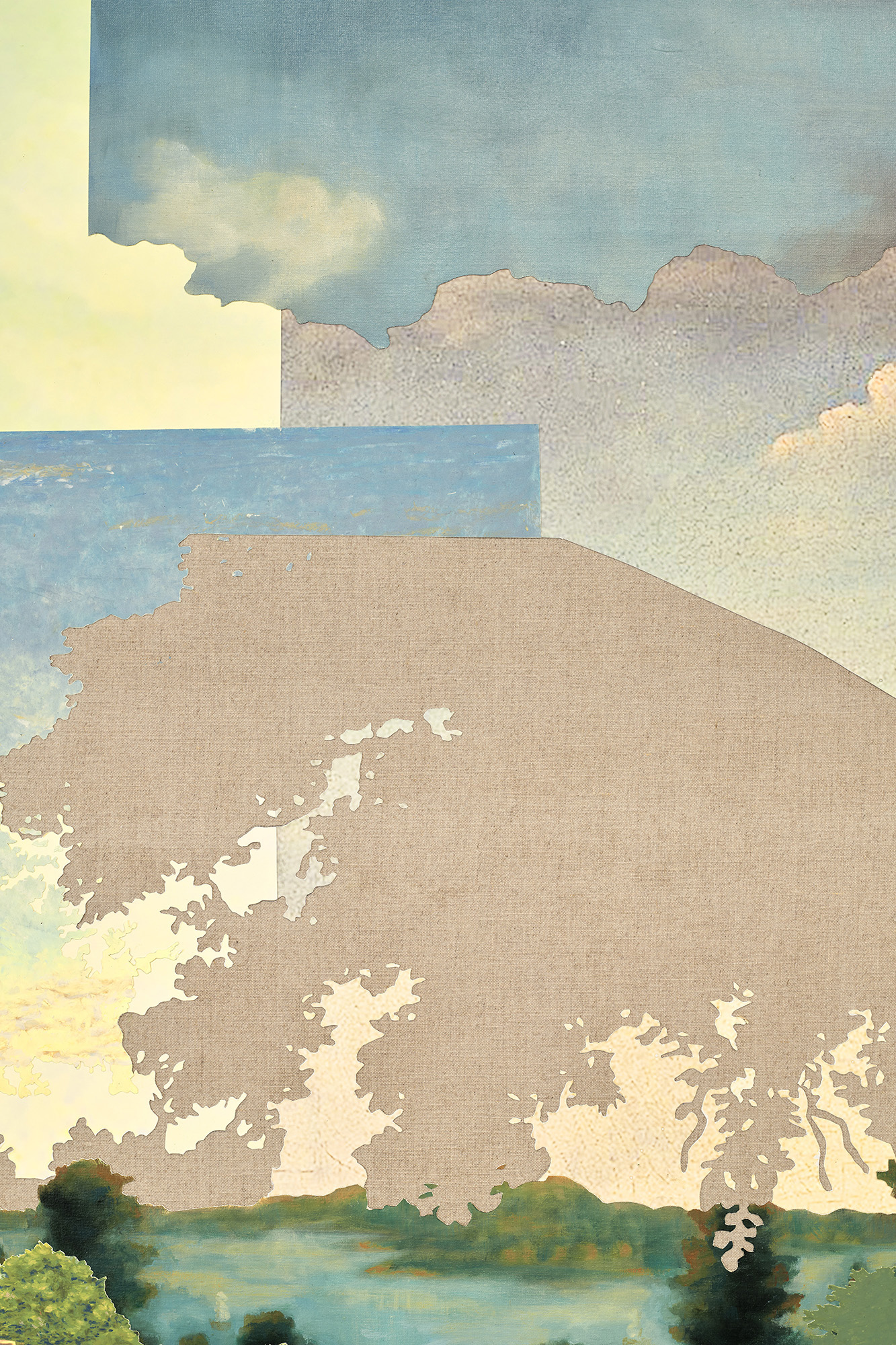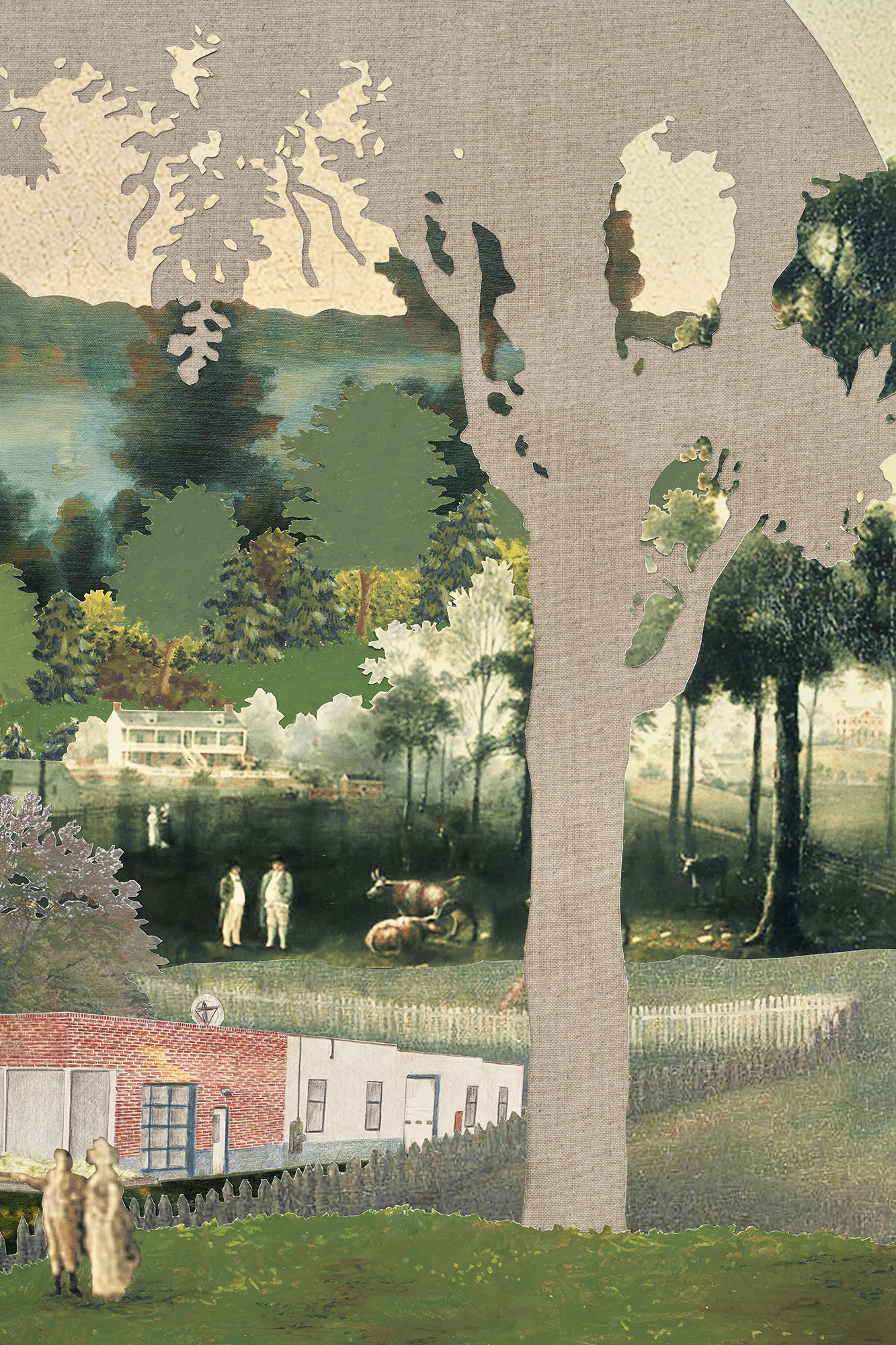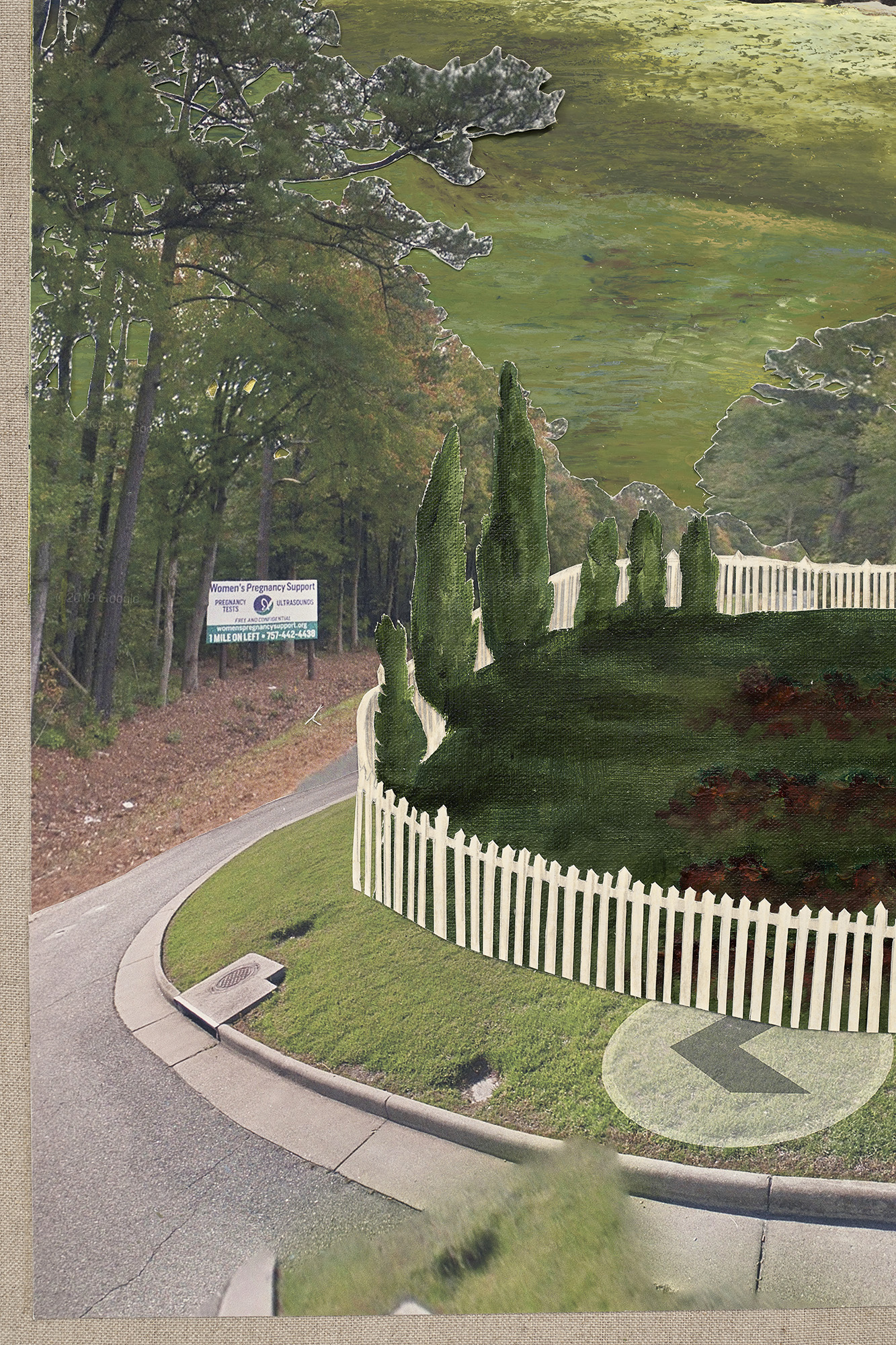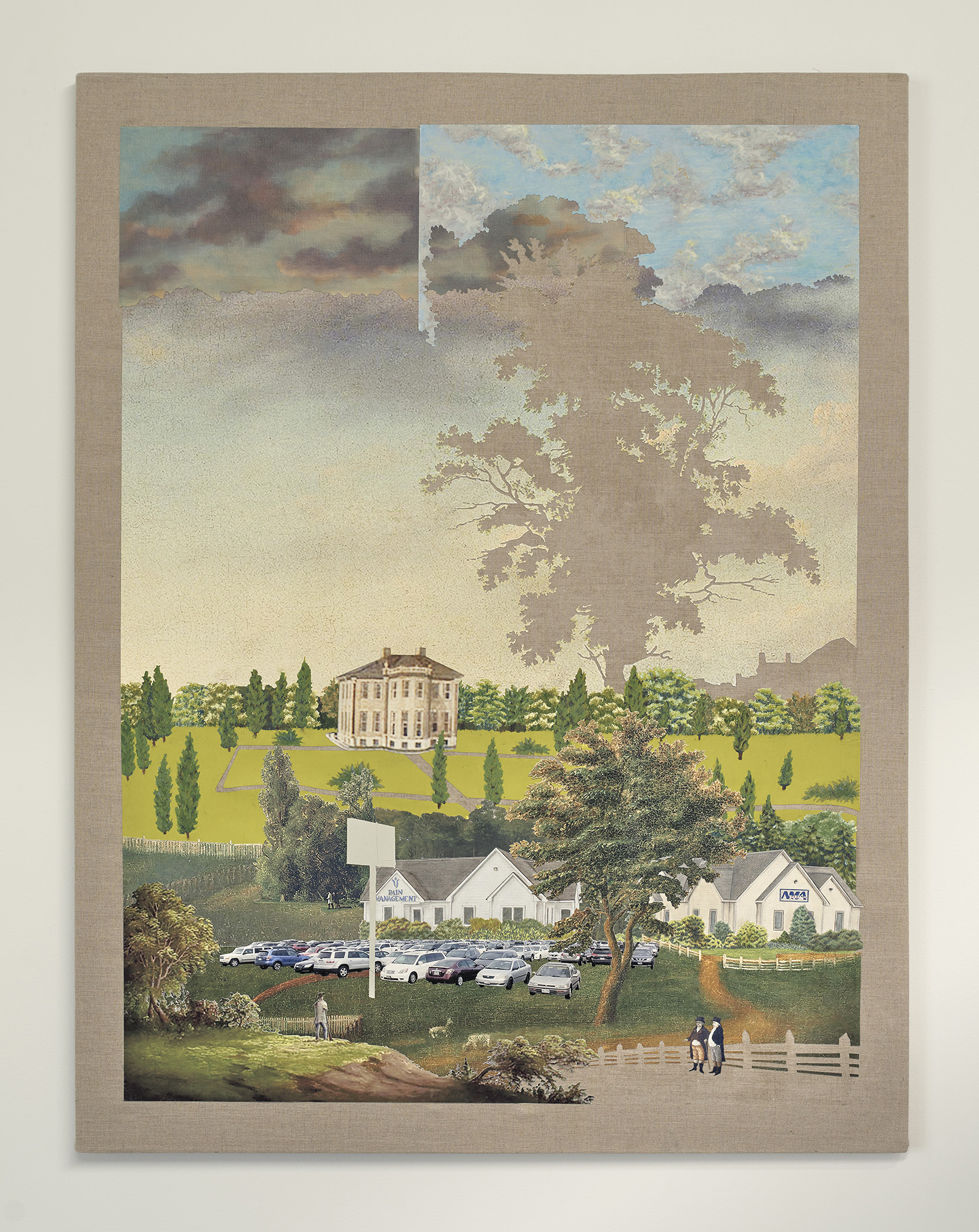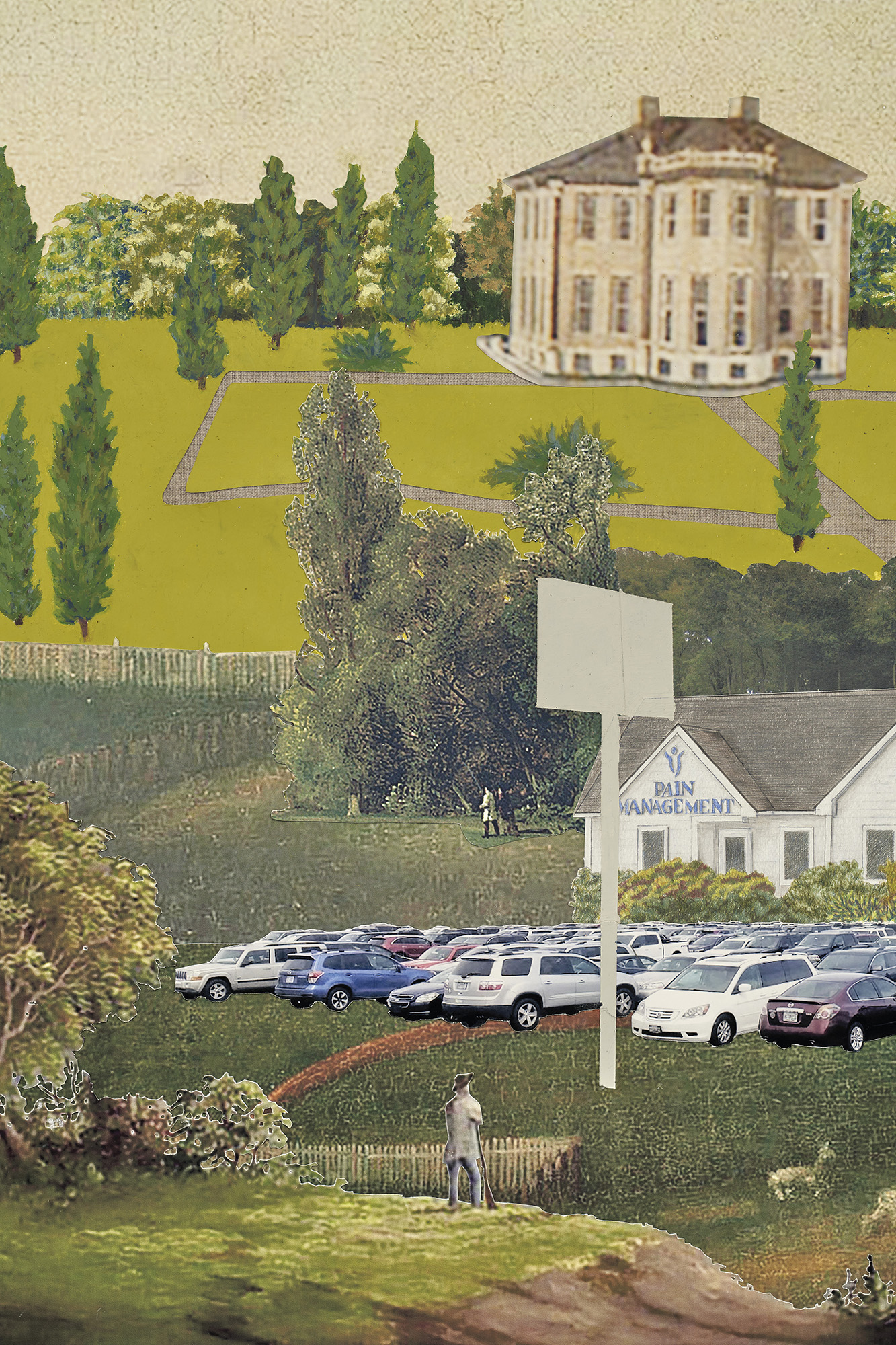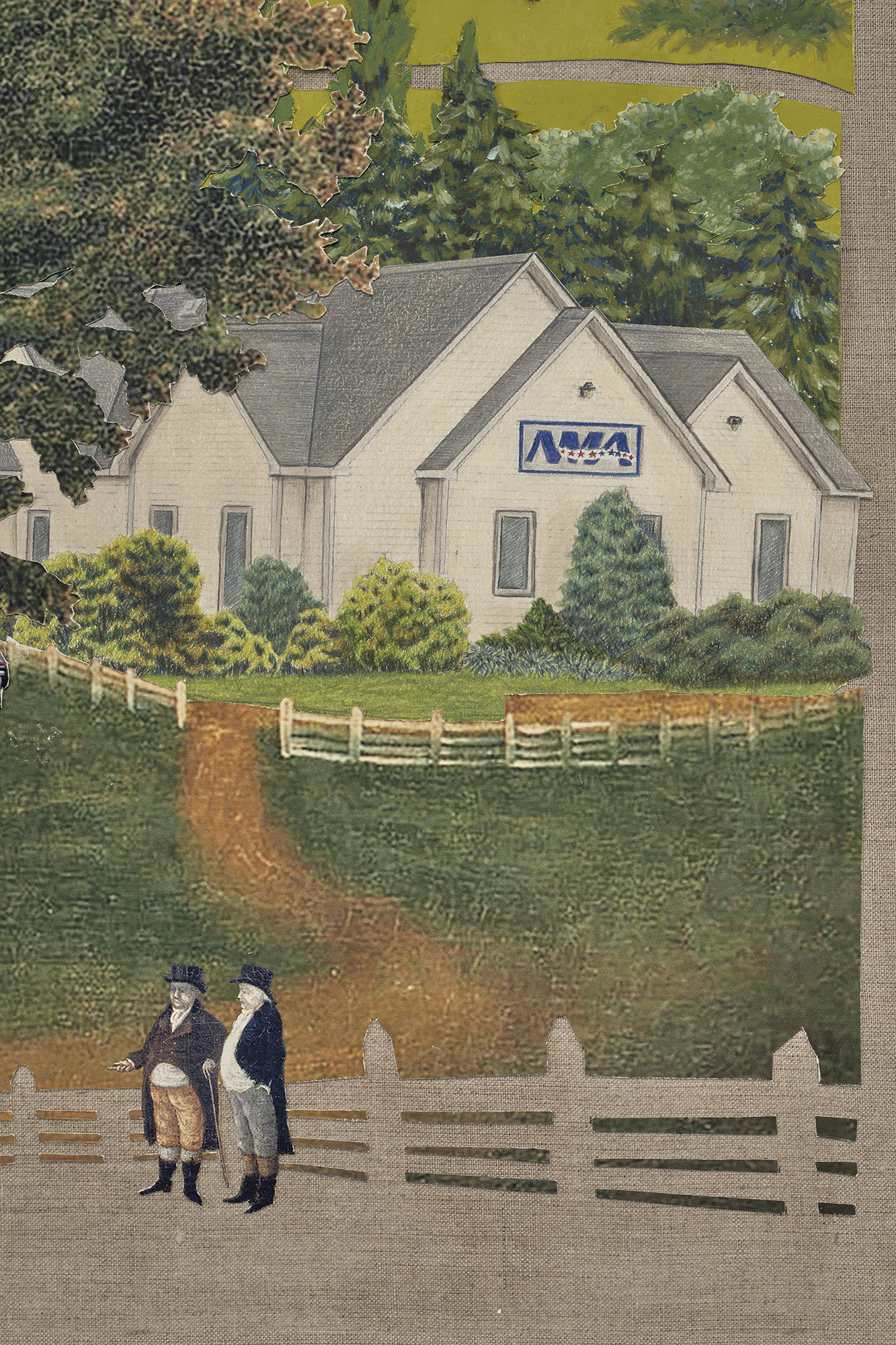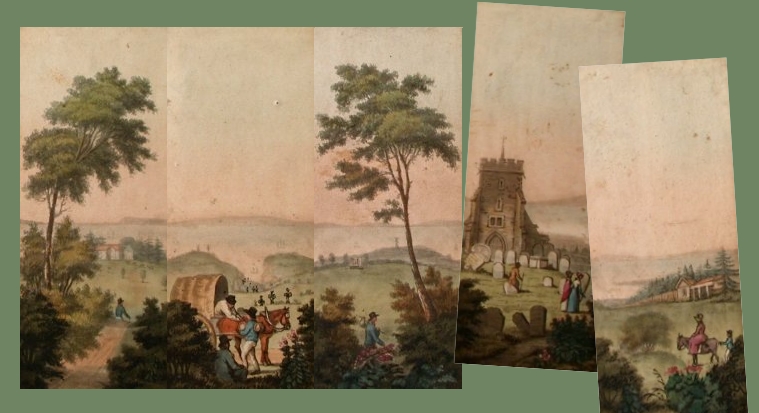MYRIORAMA
In her research, Colwell became interested in plantation paintings commissioned by wealthy landowners from the British colonial period. In the British-American tradition, slaves rarely appear in the agricultural landscape while in other British colonies, like Jamaica or Barbados, the representation of slavery is a central part of the plantation portrait. The absence of an American representation of slavery has created a genteel image of Southern-ness in the popular imagination that can still be found in the contemporary landscape once dominated by slave labor.
Myriorama is a large-scale mixed media landscape drawing that examines the historic and contemporary absence of a representation of slavery by collaging elements from old plantation paintings with the contemporary landscape. Using Google Maps Street View, Colwell documents the former landholdings of her slaveholding ancestors and combines these features with fragments of the period paintings: a cell phone tower and a Palladian mansion, a parking lot with a pasture of sheep, a Holiday Inn with a colonial family out for a stroll.
The work takes its name from a 19th century parlor game of interchangeable cards illustrating idyllic colonial landscapes. For Colwell, the myriorama’s reconfiguration and fragmentation of a terrain parallels the myth of the Southern landscape as the site of a continually reconfigured past, idealized and devoid of slavery. The work questions how our perspective of the landscape can deliberately mute a difficult past, rendering its vestiges invisible in the present.
Myriorama, 2023.
Five panels of mixed media collage on linen canvas.
Panel dimensions: 85 x 110 cm, 33.5 x 43 in
